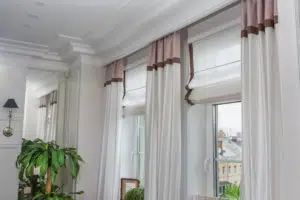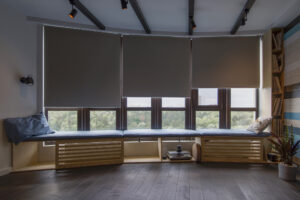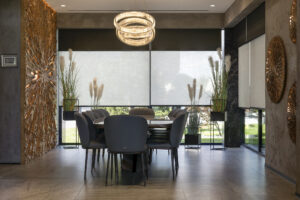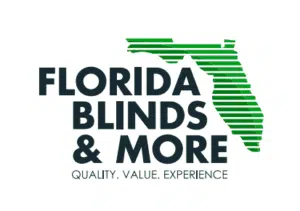Florida window treatments are very popular to protect home furnishings from the sun. Seminole County residents find that they can change the look of their home in a matter of minutes. Have you ever wanted to change your home’s look while protecting your furniture? Now’s the time to make a change. With so many window-covering options, window treatments seem like a luxury. But window treatments pay off in reducing heating and cooling costs. Window coverings also increase the comfort of your home. Start your new window treatment plan with the right numbers. This area guide will help you set a budget if you live in Volusia, Flagler, Orange, or Seminole County Florida. Read on to learn more about window treatment cost.
Many Types of Window Treatments
A family in Winter Park installed a combination of two or more window treatment types. When done in combination, you can save on window treatment costs. Many people combine blinds with drapes and curtains.
Combination ideas also offer you double protection from the Florida sun.
If your window coverings don’t work together, the result could lead to a design disaster. To avoid this pitfall, window coverings need careful coordination.
Here are some of the types of treatments you can mix and match.
Curtains
Curtains are a lightweight material that is sheer and has no lining. These are available in a range of styles and designs to match any decor from casual to formal. They are also used in tandem with treatments designed to block out light.
Curtains range in price based on the material and design. The average curtain runs $7-$50 per panel. For a classier look using linen or silk, the price moves up to $20-$150 per panel.
Customized or named designers work, or specialized fabrics can fetch $1,500 or more per panel.
You must also address installation costs. Whether self-installed or hired out, your budget needs to include the necessary extras.
Curtains need curtain rods and installation hardware. Depending on your look, you might also include valances, cornices, finials, and any other decorative item. These add-ons can lift your budget by $5-$600 per window.
Drapes
Drapes use heavy or thick material and have a fabric lining. When closed, they block a significant amount of light from entering the room. Drape designs are often plain and muted.
Drapes also range in pricing like that of curtains, but with more material comes more cost. The material type, length, and width play a big role in the pricing. Drapes can start around $60 for 29X45 and move up to $90 for 42X90.
Custom-made drapes can cost between $250 to $2000 per panel. For instance, made-to-fit drapes are far more costly than off-the-shelf drapes.
Blinds
Blinds are a hard window treatment made of PVC, aluminum, and wood. Blinds are individual slates of material that serve as self-coating window coverings. The treatment hangs over a window or door opening.
Slats of window blinds can be different widths that are often ½ inch to 2 inches.
Horizontal blinds raise up from the bottom to the top, or from top to bottom depending on the style. Vertical blinds open to the side over sliding doors to make the door easy to open.
The slats tilt to allow in some level of sunlight while maintaining privacy.
The average blind costs $11-$225 per window. Vertical blinds start are around $50 per window and go up from there. And, Roller blinds range between $8-$150 per window.
Shades
The cost of window shades varies according to type, dimensions, and fabric. The average window costs are about $8-$200. Designer shades and custom shades carry a much higher price tag.
The hardware for installation is only around $5-$40 per window. Installation may vary between window treatment installers versus a handyman. You can expect $40 per window on up depending on the scope of the project.
Types of Blinds
Here are several types of blinds available. The structure and material of each determine its costs.
Vertical Blinds
Vertical blinds are versatile and available in bright and contrasting colors. Soft material can cover this hard treatment. A feather duster or damp cloth wipes the treatment clean,
Wood Blinds
Wood blinds are pleasing to the eye and cleaned with wood furniture polish. Built from long-lasting materials, you can paint them or leave them natural. Popular materials include bamboo, pine, beech, and mahogany.
Faux Wood Blinds
Made of synthetic material, faux wood blinds look like natural wood. This is an economic alternative to real wood. They are also moisture resistant for more humid rooms.
Panel Track Blinds
Panel track blinds are an alternative to drapes or vertical blinds. The treatments are made of many panels of fabrics, woods, or grasses, that run the length of a window. The panels glide along tracks above the window to manage the amount of privacy and light that enters in.
Roller Blinds
Roller blinds use a single piece of fabric. When opened, the material forms a roll that wraps around a horizontal bar at the top of the window. They use natural fabrics like cotton, synthetic material like vinyl, and woven grass like bamboo.
Zebra Blinds
Zebra blinds are a hybrid of vertical blinds and roller shades. They work like vertical blinds but with strips of sheer and solid fabric instead of slats. They roll into a valance when opened.
Types of Shades
Roman and Cellular shades work well with combination treatments. The below presents the differences between types.
Roman Shades
The fabric of Roman shades forms pleats when the shade is open. They are horizontal and work well for smaller windows. Roman shades offer a balance between the tradition of curtains and contemporary blinds.
Roman shades are available in natural fabrics like cotton, linen, and silk. They are also made with cheap synthetic materials or repurposed curtains. Roman shades are versatile with almost no limit on design, color, and texture options.
The heavier the material used, the fewer outdoor sounds leak into the house.
Cellular Shades
These shades are also called honeycomb blinds. Their accordion fold brings a certain level of energy-efficient insulation to bear. Their honeycomb-shaped air pockets can save as much as 40% heat lost through windows in winter.
The cell structure also reduces outdoor noises.
Cellular shades can be single or double-celled. They are often made of high-quality textured fabrics.
Window Treatment Cost
Whether you live in Orlando or Oak Hill, you now have a good understanding of window treatment costs. By using a combination of treatments, you’ll reduce your heating and cooling expenses. And, you have lots of options for creating a great look.
If you’ve enjoyed this article, check out similar posts for your next project.






